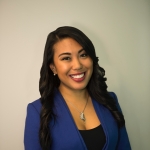Elevating the Arts through Non-Arts Spaces
Posted by May 09, 2019

Ms. Aileen Alon
I am an artist by training, art historian by education, (former/on-hiatus) arts administrator by chance, creative placemaker by practice, and lifelong supporter of the arts by choice. And while most of my career has been in the arts, I’ve never been employed by an arts organization.
Most of my life has also involved the arts. Aside from a failed attempt to be a ballerina when I was five, my childhood was defined by art classes and encouraging teachers; violin lessons with the USC String Project; summers at the Tri-District Arts Consortium, University of South Carolina and Savannah College of Art & Design; and the Palmetto Center for the Arts high school magnet program. Even an understanding of my own cultural heritage came mostly from being in a Filipino Cultural Dance Troupe, performing at events and festivals around town.
Despite having these continuous opportunities to pursue artistic and creative interests, I never thought my hometown of Columbia, South Carolina, was a place to experience a diverse or growing arts and culture sector. I wanted to see more people in the arts who looked like me or had a story similar to mine. I also wanted to see the arts outside of purely arts spaces, to be less confined, and to be more accessible to the greater public. However, I had no idea what my career path in the arts would look like, only that I did not want to be a professional artist, nor work in a traditional museum or gallery after college.
Over the past nine years since moving from South Carolina to Miami, this inner desire to make the arts more accessible and diverse has manifested into me developing opportunities where I can cultivate meaningful relationships between the arts and other sectors. In doing so, I’ve worked mainly in non-arts organizations focused on education and youth development, community and economic development, and now innovation and entrepreneurship.
With City Year Miami, I helped underserved youth paint murals to beautify public spaces and learn about social justice issues. Then for seven years, I led the integration of the arts and culture into neighborhood revitalization strategies at the Opa-locka Community Development Corporation. I saw the organization expand its scope to include not only housing, but also economic empowerment, tech, health, education, infrastructure, and more in its approach to community development. What often tied this multi-faceted work together? The arts. And, even in my new role at Venture Cafe Miami, I am encouraged to build bridges between the arts and non-arts industries to spur creativity, innovation, and community with a focus on diversity, inclusion, and accessibility.
I recently spoke about this work at the Creative Placemaking Leadership Summit | South, hosted by the National Consortium of Creative Placemaking and ArtPlace America, in my hometown. For me, it was an exciting homecoming. I not only learned about Columbia’s growing art scene—the one I wished it had when I was younger—and saw how it has changed with creative placemaking, but also was able to give back to, and share knowledge with, the community that raised me. In preparing for my presentation, I reflected a bit on my professional trajectory in the arts and had a moment of clarity:
I don’t need to work for an arts organization to do the work I love.
In fact, I’ve probably been able to do more for the arts and culture sector in my community by being an advocate for the arts in non-arts organizations. Any attempt to mold myself or my career into a cookie cutter package of how someone goes about working in the arts is futile, and goes against what I learned as an artist: to be unique, creative, and develop your own style.
I can continue to pave my own way and expand mindsets of what someone in the arts looks like, or where they work, by continuing in this untraditional route. In infiltrating non-arts organizations with both an artistic and arts advocacy perspective, I can help make the arts an integral part of the solution, rather than an option. As a result, the organizations and communities I work with help to push boundaries and grow a more innovative and widely accessible arts and culture field for the future.
This post is part of the Own Your Past, Shape Your Future blog salon.





